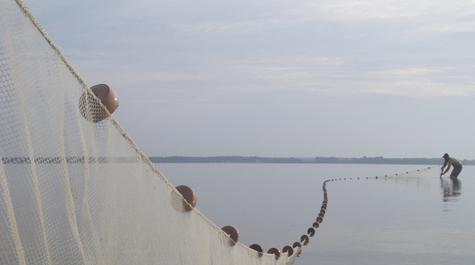Juvenile Striped Bass Survey
The Striped Bass (Morone saxatilis) is one of the most sought-after commercial and recreational finfish in Chesapeake Bay. The Virginia Institute of Marine Science (VIMS) initiated the juvenile Striped Bass seine survey in 1967 to monitor the abundance of this important resource. The survey was terminated in 1973 when federal funding was discontinued. As population levels declined in the 1970s, concern about Striped Bass rose, and in 1980, funding was reinstated.
This research program generates the second-longest continuous Striped Bass index in the United States; an index of abundance has now been calculated every year since 1980. This index is part of a coast-wide sampling program of Striped Bass recruitment conducted from New England to North Carolina under the coordination of the Atlantic States Marine Fisheries Commission (ASMFC); the VIMS index and others like it are valuable tools used in the formation of ASMFC management regulations.
Objective
The primary objective of the survey is to monitor relative annual recruitment success of juvenile Striped Bass in the spawning and nursery areas of lower Chesapeake Bay by developing an annual index of abundance for each year class. Estimates of young-of-the-year abundance derived from catch data help evaluate the health of a stock, and are used in predicting future commercial and recreational fish abundance. The survey also generates indices of abundance for a number of other recreationally, commercially, and otherwise ecologically important species.
Specific goals of the program are to
- Measure the relative abundance of young-of-the-year Striped Bass in the James, York, and Rappahannock river systems
- Quantify environmental conditions at the time of collection
- Examine relationships between juvenile Striped Bass abundance and measured or proxy environmental and biological data







